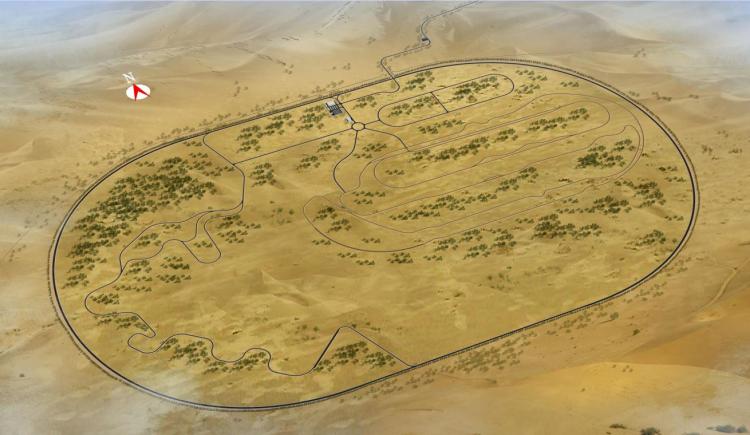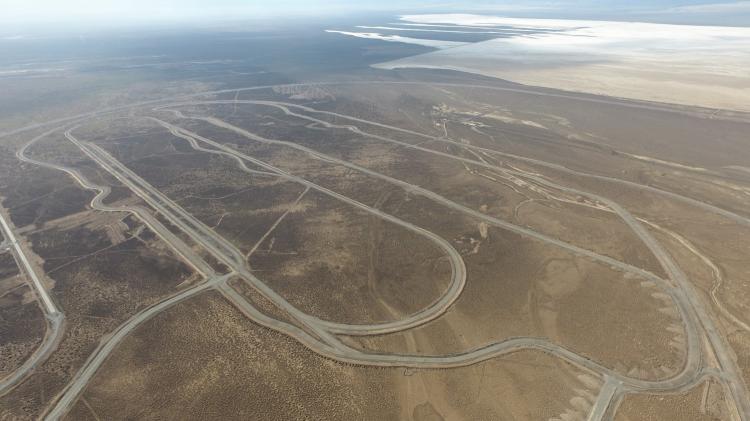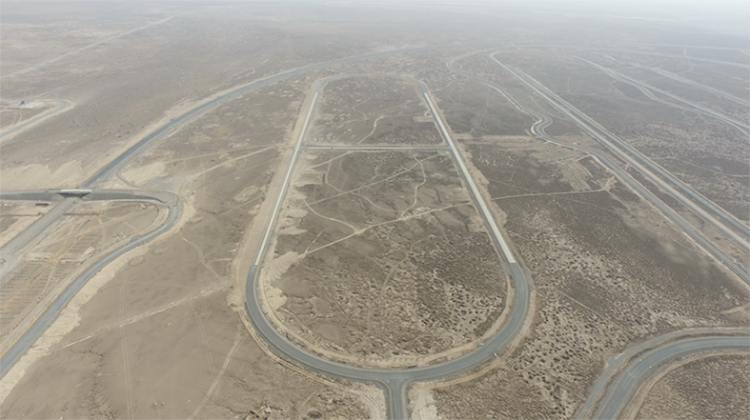Aiding Lake, the lowest point on land in China, the lake surface is 154.31 meters lower than sea level, and the lowest point of the lake bottom is -161 meters. It is one of the hottest and driest areas in the world, with annual precipitation less than 16 millimeters.
Huoyan Mountain, the hottest place in China, is located on the northern edge of the Turpan Basin, on the northern route of the ancient Silk Road. The highest surface temperature in summer reaches about 90°C.
Today, SAIC Volkswagen has built the world’s largest comprehensive test track in extreme heat and drought on this land, providing extreme test scenarios for vehicles exposed to high temperatures and harsh road conditions. From Anting, Shanghai to Heihe, Heilongjiang, and then to Turpan, Xinjiang, SAIC Volkswagen has established the first complete “all-weather” and “all-road conditions” test track system in China.

SAIC-Volkswagen’s Xinjiang test site is located in the Turpan Basin known as the “Fire State” and the “Fengku”, adjacent to Aiding Lake, the lowest point on land in China, and 36 kilometers away from the hottest Flame Mountain in China. The highest measured temperature in summer here reaches 50.7°C, and the highest surface temperature reaches about 90°C, which can be called a veritable “hell examination room” of extreme high temperature.
The test track covers an area of 23.3 square kilometers, equivalent to the size of 3270 football fields. The total length of the roads in the field is 48 kilometers. It is composed of seven modules: exposure test square, high-speed ring road, handling stability road, tropical durability test road, dust/rock impact test road, abnormal noise test road, and wading test road. Performance testing requirements for traditional fuel vehicles and new energy vehicles.

The Xinjiang test site has a typical temperate continental arid desert climate, with more than 118 days above 35°C and more than 78 days above 40°C every year, and the total annual radiation is nearly 6000MJ/㎡. The exposure test square in the test track covers an area of 6,000 square meters and can accommodate 70 vehicles for testing at the same time. It can fully investigate the ability of automotive interior and exterior trims to resist environmental aging under extreme climatic conditions.

The total length of the high-speed loop is 13.3km, and the maximum speed without lateral force in the curve is 200km/h. Engine calibration, maximum speed, fuel, acceleration, handling and other performance tests can be carried out.

The total length of the handling stability road is 8.9km, including wave road, manhole cover road, impact road, bad asphalt road and other modules. By observing the steering accuracy, reaction time and body posture changes of the vehicle in various environments and road conditions, the suspension of the vehicle can be accurately evaluated. Frame tuning, drivetrain response level.

The total length of the tropical durability test road is 12.9km, including undulating hills, long wavy roads, twisting roads, gravel roads, washboard roads, etc. On tropical roads, it can achieve more than ten times the test strength on conventional roads, thus effectively verifying the strength and durability of the vehicle and each component under high temperature conditions.

The total length of the abnormal noise test road is 2.7km, including big stone road, basalt road, Hengkan road, sine wave road, nail head road, coarse-grained gravel road and deceleration belt road, etc. On the abnormal sound road, the vibration filtering and quiet performance of the vehicle are infinitely magnified. By detecting the different vibration frequencies of the vehicle on various roads, the vibration and noise of the whole vehicle and its parts and the stability of the vehicle can be analyzed in hot climates. .

The total length of the dust/stone impact test road is 6.8km. In Turpan, there are more than 60 days of severe wind and sand weather above level 8 and more than 35 days of extremely severe wind and sand weather of level 10 or above every year. The Dusty Road can simulate the impact of dust and fly ash on the vehicle’s airtightness, engine and cabin components; the Stone Road can simulate the impact of gravel and flying stones on the road on the body coating, chassis damage, and damage to the vehicle body. effect on tire performance.

The wading test has a length of 168m and a maximum water depth of 50cm, which can verify the vehicle’s wading passability and the strength of the exterior parts of the vehicle body.

The Xinjiang Test Track is the fourth professional site of the Volkswagen Group in the world that meets the summer test standards after South Africa, Oman, and the United States. Having been deeply involved in the Chinese market for 35 years, SAIC Volkswagen has formed a complete product R&D and quality certification system. On the basis of strictly adhering to the unified R&D standards of the Volkswagen Group, it adheres to “the needs of Chinese consumers as the guide” and continuously carries out product and technological innovation. .
In 2003, SAIC-Volkswagen established China’s first international-standard passenger car proving ground in Anting, which includes nearly 70 typical characteristic road surfaces, which can simulate the test requirements of various daily comprehensive working conditions. Every winter at the Heihe test track, there are also SAIC Volkswagen products galloping in the extremely cold climate of northern China. Now that the Xinjiang test track is put into use, more new models will complete the “all-weather” and “all-road conditions” customs clearance tests in the future, bringing consumers a safer and more comfortable driving experience!




